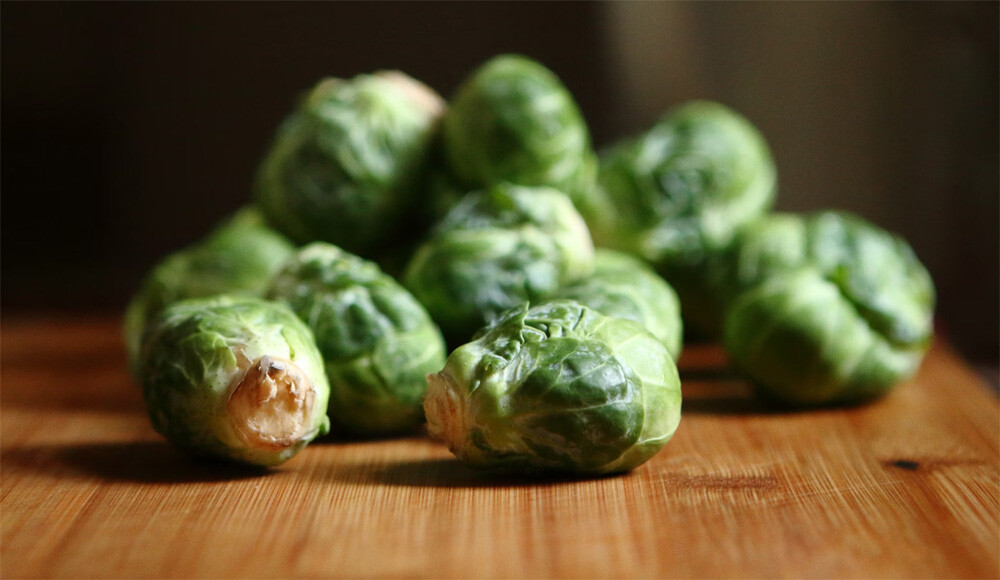We know that companies keep tinkering with the recipes behind processed foods, changing nitrates or benzoates so you’ll become as addicted as possible. More basic foods, however, are more dependable. Chicken is chicken, corn is corn and bananas are bananas — those never change.
Just kidding. All of those last examples changed enormously over recorded history, thanks to our selectively breeding them to get their DNA how we want. And if we switch our gaze to other foods, we’ll find some that changed genes in an even shorter timeframe.
Brussels Sprouts
A couple decades ago, jokes on kids’ shows would keep saying something or another about a character hating Brussels sprouts. If you were around back then, you probably learned that Brussels sprouts tasted gross before you’d ever heard of the city of Brussels. You probably learned Brussels sprouts tasted gross before you’d ever seen the words written down, or knew how to read at all, which is why you probably thought they were called “Brussel sprouts.”
Don’t Miss
Go eat some Brussels sprouts today, however, and you might well find that you enjoy them. Is this perhaps an example of your refined adult preferences? Or does it have something to do with how your taste buds die as you age, so you can no longer detect the yuckiness that’s still there?
No, it’s because Brussels sprouts really do taste better than they used do. Brussels sprouts used to taste bitter, but during the 1990s, we started crossbreeding them with variants that didn’t. When we were done, we’d bred the bitterness out. Turns out there’s no moral law saying healthy stuff must taste bad. If we don’t like them, we can just fix them.
In summary, breeders bred a batch of Brussels, but the Brussels were too bitter. So, breeders bred some better Brussels to make the bitter Brussels better.
Pistachios
Pistachio nuts in stores used to always be red. They didn’t come off the tree red, but the nut factory made sure to dye them before they reached consumers. The average person would go their whole life without seeing one that looked naturally brown. That was because harvesting pistachios meant a whole lot of violent shaking that left the shells looking ugly, and the dying process aimed to cover up those defects.
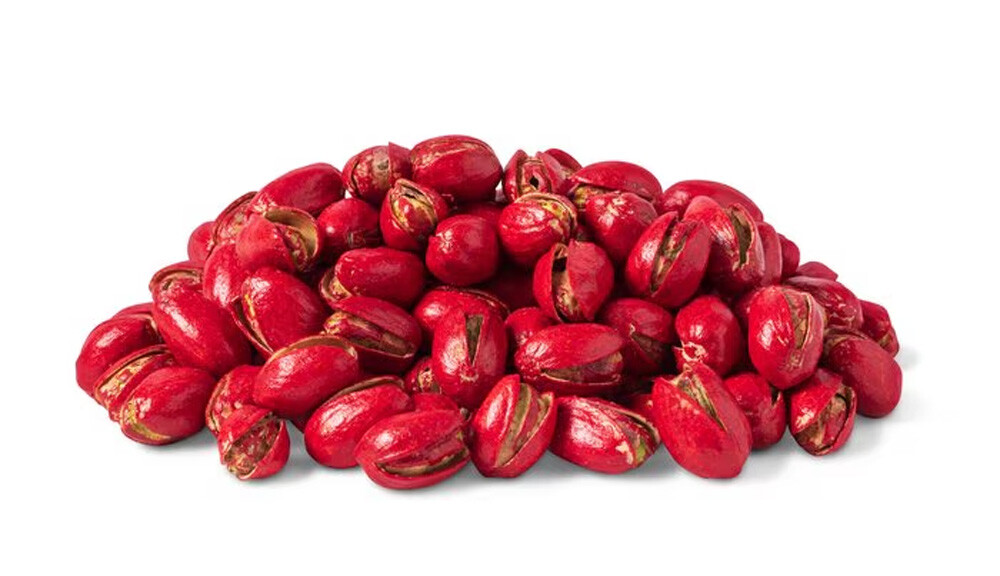
That’s one thing you should know about how pistachios used to be. The other thing you should know is the bulk of them used to come from one country: Iran. Then came the 1979 Hostage Crisis, and the U.S. imposed a trade embargo on Iran. America now switched to growing its own pistachios. It came up with a new harvesting process that doesn’t damage shells, leading to a new never-say-dye attitude.
Today, we instead associate pistachios with the color green, due to the light green color of the nuts and the deeper green color of the unripe shells. Though, when you eat green pistachio ice cream, that’s dye once again. If they don’t dump in food coloring, pistachio ice cream will be white — and so will mint ice cream.
Jalapeños
In the 1990s, the word “jalapeño” was synonymous with spicy. You could use a picture of one to indicate how hot a dish on a menu was, and the idea of getting some jalapeño juice in your eyes or some other orifice was the stuff of horror stories. Today? Not so much. Maybe you’d call a habanero spicy, but jalapeños are so mild, you can eat a pile of them.
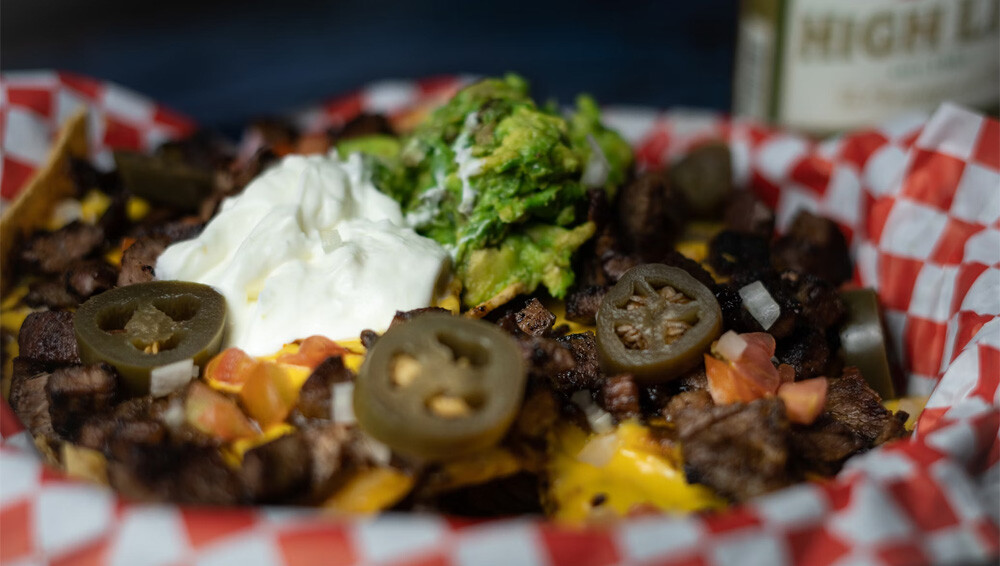
Pamela Buenrostro
This is by design. In the 1990s, the mildest jalapeños used to be the most in demand, thanks to people who couldn’t quite handle the hotter stuff. So, Texas A&M developed a new breed called TAM II, which was only a tenth as spicy as the alternative. Today, you might find yourself with one of the other many hotter jalapeño varieties, but there’s a good chance you’ll find yourself with TAM II or something similarly watery.
TAM II crowded out the competition, and not just because some buyers liked it more. The majority of jalapeños don’t go to kitchens at all but to factories, where they’re mashed up to make sauces and to flavor stuff like chips. These products run the spectrum from mild to hot. But it’s very easy to make a product hotter, by adding the chemical oleoresin capsicum, while it’s harder to make produce milder. So, companies want jalapeños as mild as possible. The peppers provide the flavor, and then when it comes to hotness, the companies can add that later chemically as necessary.
Sriracha Sauce
As you can see, “jalapeño” is more of an umbrella term rather than referring to one exact type of pepper. You know Sriracha sauce? Its label says that the primary ingredient is “chili,” and the chili pepper they use happens to be a type of jalapeño. At least it used to be, until some recent shenanigans.
Huy Fong Foods made its sauce using jalapeño peppers exclusively made by one grower: Underwood Ranches. They’d pay in advance, and Underwood would sell them all they needed. Then Huy Fong sued Underwood, claiming to have overpaid by $1 million and wanting the money back. Underwood countersued, saying Huy Fong’s malfeasance had caused all manner of assorted trouble, and a 2019 jury sided with Underwood, awarding them $23 million.
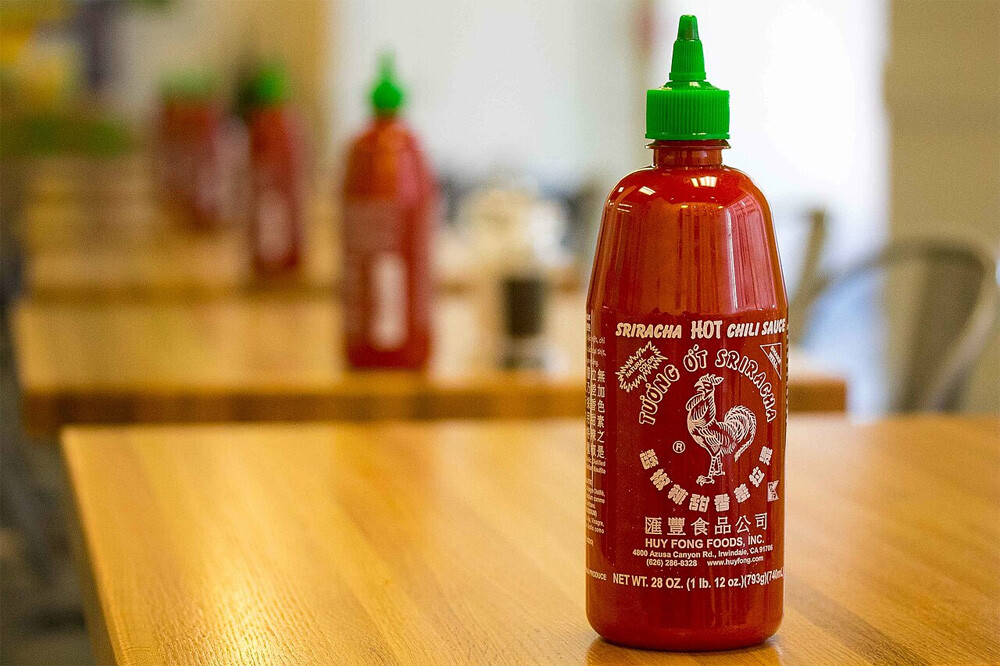
The relationship was shattered. Underwood switched to making their own sauces and largely ditched growing those special jalapeños in favor of stuff like basil and cilantro. Huy Fong, after halting production for a while, switched to peppers from a different supplier. The resulting sauce doesn’t taste much like the old kind at all.
Huy Fong is under no obligation to disclose exactly what sort of pepper they’re using now, as all they have to say is it’s a “chili.” We trust it’s not TAM II, though, because that stuff’s basically cabbage.
Apples
Jalapeños are just one example of many types of produce that lost their bite thanks to selective breeding. Usually, buyers favor fruits that look better and last longer, and when breeders select for those, taste suffers.
Tomatoes taste worse than they used to, as do strawberries. Loyal traditionalists preserve “heirloom” variants of both that retain their tasty genes. The most extreme victim of this aesthetics supremacy may be the Red Delicious apple. Today, it’s perhaps the most perfect-looking apple. It looks like it’s made of wax, and many say it tastes like it’s made of wax, too.
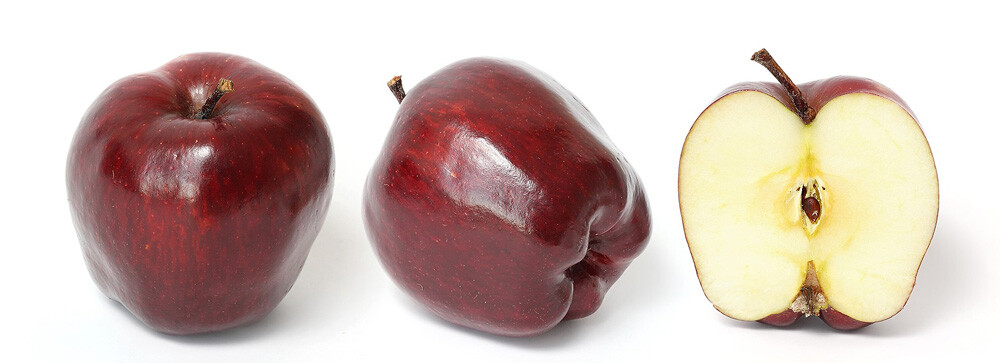
Red Delicious apples used to actually be delicious. That’s why they got that name (though, naming a tasteless apple “delicious” would have been a smart bit of marketing). But then one tree chanced upon a mutation that made the fruits redden before they were ripe, which made them look attractive much longer. Soon, all breeders selected for this gene rather than for flavor.
Buyers have started rebelling. If you aren’t satisfied with Red Delicious, you can try the increasingly popular Gala or Fuji apples. Or, you can suck on a green apple Jolly Rancher, as that is the platonic ideal of appleness.
Follow Ryan Menezes on Twitter for more stuff no one should see.

